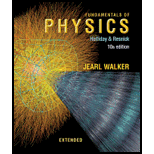
Fundamentals of Physics Extended
10th Edition
ISBN: 9781118230725
Author: David Halliday, Robert Resnick, Jearl Walker
Publisher: Wiley, John & Sons, Incorporated
expand_more
expand_more
format_list_bulleted
Concept explainers
Textbook Question
Chapter 5, Problem 70P
An 80 kg man drops to a concrete patio from a window 0.50 m above the patio. He neglects to bend his knees on landing, taking 2.0 cm to stop. (a) What is his average acceleration from when his feet first touch the patio to when he stops? (b) What is the magnitude of the average stopping force exerted on him by the patio?
Expert Solution & Answer
Want to see the full answer?
Check out a sample textbook solution
Students have asked these similar questions
A 9500-kg test missile blasts off vertically from the ground with a constant upward acceleration
of 2.28 m/s2
. When it has reached a height of 550 m, its engines suddenly fail; the only force
acting on it is now gravity.
a) What is the maximum height reached?
b) How much time will elapse after engine failure before the rocket comes crashing down the
ground, and how fast will it be moving just before it crashes?
Your answer is partially correct.
Flying Circus of Physics
A man of mass 71 kg drops to a concrete patio from a window 1.2 m above the patio. He neglects to bend his knees on landing, taking
2.8 cm to stop. (a) What is his average acceleration from when his feet first touch the patio to when he stops? (b) What is the
magnitude of the average stopping force exerted on him by the patio?
(a) Number
(b) Number
420.04
29822.8
Units
Units
m/s^2
N
A 1370-kg car is skidding to a stop along a horizontal surface. The car decelerates from 27.6 m/s to a rest position in 3.15 seconds. Assuming negligible air resistance, determine the coefficient of friction between the car tires and the road surface.
Chapter 5 Solutions
Fundamentals of Physics Extended
Ch. 5 - Figure 5-19 gives the free-body diagram for four...Ch. 5 - Two horizontal forces, F1=(3N)i (4N)jandF2=(1N)i...Ch. 5 - In Fig. 5-21, forces F1 and F2 are applied to a...Ch. 5 - At time t = 0, constant F begins to act on a rock...Ch. 5 - Figure 5-22 shows overhead views of four...Ch. 5 - Figure 5-23 shows the same breadbox in four...Ch. 5 - July 17, 1981, Kansas City: The newly opened Hyatt...Ch. 5 - Figure 5-25 gives three graphs of velocity...Ch. 5 - Figure 5-26 shows a train of four blocks being...Ch. 5 - Figure 5-27 shows three blocks being pushed across...
Ch. 5 - A vertical force F is applied to a block of mass m...Ch. 5 - Figure 5-28 shows four choices for the direction...Ch. 5 - Only two horizontal forces act on a 3.0 kg body...Ch. 5 - Two horizontal forces act on a 2.0 kg chopping...Ch. 5 - If the 1 kg standard body has an acceleration of...Ch. 5 - While two forces act on it, a particle is to move...Ch. 5 - GO Three astronauts, propelled by jet backpacks,...Ch. 5 - In a two-dimensional tug-of-war, Alex, Betty, and...Ch. 5 - SSM There are two forces on the 2.00 kg box in the...Ch. 5 - A 2.00 kg object is subjected to three forces that...Ch. 5 - A 0.340 kg particle moves in an xy plane according...Ch. 5 - GO A 0.150 kg particle moves along an x axis...Ch. 5 - A 2.0 kg particle moves along an x axis, being...Ch. 5 - GO Two horizontal forces F1 and F2 act on a 4.0 kg...Ch. 5 - Figure 5-33 shows an arrangement in which four...Ch. 5 - A block with a weight of 3.0 N is at rest on a...Ch. 5 - SSM a An 11.0 kg salami is supported by a cord...Ch. 5 - Some insects can walk below a thin rod such as a...Ch. 5 - SSM WWW In Fig. 5-36, let the mass of the block be...Ch. 5 - In April 1974, John Massis of Belgium managed to...Ch. 5 - SSM A 500 kg rocket sled can be accelerated at a...Ch. 5 - A car traveling at 53 km/h hits a bridge abutment....Ch. 5 - A constant horizontal force Fa pushes a 2.00 kg...Ch. 5 - A customer sits in an amusement park ride in which...Ch. 5 - Tarzan, who weighs 820 N, swings from a cliff at...Ch. 5 - 24 There are two horizontal forces on the 2.0 kg...Ch. 5 - Sunjamming. A sun yacht is a spacecraft with a...Ch. 5 - The tension at which a fishing line snaps is...Ch. 5 - SSM An electron with a speed of 1.2 107 m/s moves...Ch. 5 - A car that weighs 1.30 104 N is initially moving...Ch. 5 - A firefighter who weighs 712 N slides down a...Ch. 5 - The high-speed winds around a tornado can drive...Ch. 5 - SSM WWW A block is projected up a frictionless...Ch. 5 - Figure 5-39 shows an overhead view of a 0.0250 kg...Ch. 5 - An elevator cab and its load have a combined mass...Ch. 5 - GO In Fig. 5-40, a crate of mass m = 100 kg is...Ch. 5 - The velocity of a 3.00 kg particle is given by...Ch. 5 - Holding on to a towrope moving parallel to a...Ch. 5 - A 40 kg girl and an 8.4 kg sled are on the...Ch. 5 - A 40 kg skier skis directly down a frictionless...Ch. 5 - ILW A sphere of mass 3.0 104 kg is suspended from...Ch. 5 - GO A dated box of dates, of mass 5.00 kg, is sent...Ch. 5 - Using a rope that will snap if the tension in it...Ch. 5 - GO In earlier days, horses pulled barges down...Ch. 5 - SSM In Fig. 5-43, a chain consisting of five...Ch. 5 - A lamp hangs vertically from a cord in a de...Ch. 5 - An elevator cab that weighs 27.8 kN moves upward....Ch. 5 - An elevator cab is pulled upward by a cable. The...Ch. 5 - GO The Zacchini family was renowned for their...Ch. 5 - GO In Fig. 5-44, elevator cabs A and B are...Ch. 5 - In Fig. 5-45, a block of mass m = 5.00 kg is...Ch. 5 - GO Fig. 5-46, three ballot boxes are connected by...Ch. 5 - GO Figure 5-47 shows two blocks connected by a...Ch. 5 - An 85 kg man lowers himself to the ground from a...Ch. 5 - In Fig. 5-48, three connected blocks are pulled to...Ch. 5 - GO Figure 5-49 shows four penguins that are being...Ch. 5 - SSM ILW WWW Two blocks are in contact on a...Ch. 5 - GO In Fig. 5-51a, a constant horizontal force Fa...Ch. 5 - ILW A block of mass m1 = 3.70 kg on a frictionless...Ch. 5 - Figure 5-53 shows a man sitting in a bosuns chair...Ch. 5 - SSM A 10 kg monkey climbs up a massless rope that...Ch. 5 - Figure 5-45 shows a 5.00 kg block being pulled...Ch. 5 - SSM ILW A hot-air balloon of mass M is descending...Ch. 5 - In shot putting, many athletes elect to launch the...Ch. 5 - GO Figure 5-55 gives, as a function of time t, the...Ch. 5 - GO Figure 5-56 shows a box of mass m2 = 1.0 kg on...Ch. 5 - GO Figure 5-47 shows Atwoods machine, in which two...Ch. 5 - GO Figure 5-57 shows a section of a cable-car...Ch. 5 - Figure 5-58 shows three blocks attached by cords...Ch. 5 - A shot putter launches a 7.260 kg shot by pushing...Ch. 5 - In Fig. 5-59, 4.0 kg block A and 6.0 kg block B...Ch. 5 - An 80 kg man drops to a concrete patio from a...Ch. 5 - SSM Figure 5-60 shows a box of dirty money mass m1...Ch. 5 - Three forces act on a particle that moves with...Ch. 5 - SSM In Fig. 5-61, a tin of antioxidants m1 = 1.0...Ch. 5 - The only two forces acting on a body have...Ch. 5 - Figure 5-62 is an overhead view of a 12 kg tire...Ch. 5 - A block of mass M is pulled along a horizontal...Ch. 5 - SSM A worker drags a crate across a factory floor...Ch. 5 - In Fig. 5-64, a force F of magnitude 12 N is...Ch. 5 - A certain particle has a weight of 22 N at a point...Ch. 5 - An 80 kg person is parachuting and experiencing a...Ch. 5 - A spaceship lifts off vertically from the Moon,...Ch. 5 - In the overhead view of Fig. 5-65, five forces...Ch. 5 - SSM A certain force gives an object of mass m1 an...Ch. 5 - Prob. 84PCh. 5 - A 52 kg circus performer is to slide down a rope...Ch. 5 - Compute the weight of a 75 kg space ranger a on...Ch. 5 - An object is hung from a spring balance attached...Ch. 5 - Imagine a landing craft approaching the surface of...Ch. 5 - A 1400 kg jet engine is fastened to the fuselage...Ch. 5 - An interstellar ship has a mass of 1.20 106 kg...Ch. 5 - SSM A motorcycle and 60.0 kg rider accelerate at...Ch. 5 - Prob. 92PCh. 5 - SSM Figure 5-66a shows a mobile hanging from a...Ch. 5 - For sport, a 12 kg armadillo runs onto a large...Ch. 5 - Suppose that in Fig. 5-12, the masses of the...Ch. 5 - A nucleus that captures a stray neutron must bring...Ch. 5 - If the 1 kg standard body is accelerated by only...
Additional Science Textbook Solutions
Find more solutions based on key concepts
The amount of heat that flows per second from the boiling water to the ice-water mixture.
Sears And Zemansky's University Physics With Modern Physics
Jump to Jupiter The gravitational potential energy of a 1 kg object is plotted versus position from Earth’s sur...
Modern Physics
Where (in the southern sky, on the eastern horizon, on the western horizon, high in the sky, etc.) would you l...
Lecture- Tutorials for Introductory Astronomy
Choose the best answer to each of the following. Explain your reasoning. Which of the following s not true abou...
The Cosmic Perspective Fundamentals (2nd Edition)
How is the charging time for a capacitor correlated with the initial current? That is, if the initial current i...
Matter and Interactions
In a sink, 5 L of water at 70°C is combined with 1 kg of aluminum pots, 1 kg of silverware (steel), and 1 kg of...
Fundamentals Of Thermodynamics
Knowledge Booster
Learn more about
Need a deep-dive on the concept behind this application? Look no further. Learn more about this topic, physics and related others by exploring similar questions and additional content below.Similar questions
- A 7500-kg rocket blasts off vertically from the launch pad with a constant upward acceleration of 2.25 m/s2 and feels a negligible air resistance. When it has reached a height of 525 m, its engines suddenly fail so that the only force acting on it now is gravity. Sketch the x-t graph, v-t graph and a-t graph of the rocket’s motion from the instant of blast-off to the instant just before it strikes the launch pad.arrow_forwardA skater with an initial speed of 8.10 m/s stops propelling himself and begins to coast across the ice, eventually coming to rest. Air resistance is negligible.(a) The coefficient of kinetic friction between the ice and the skate blades is 0.135. Find the deceleration caused by kinetic friction.(b) How far will the skater travel before coming to rest? a = + - units x = unitsarrow_forwardA 2540 kg test rocket is launched vertically from the launch pad. Its fuel (of negligible mass) provides a thrust force such that its vertical velocity as a function of time is given by v(t) = At + Bt2, where A and B are constants and time is measured from the instant the fuel is ignited. The rocket has an upward acceleration of 1.50 m/s2 at the instant of ignition and, 1.00 s later, an upward velocity of 2.00 m/s. (a) Determine A and B, including their SI units. (b) At 4.00 s after fuel ignition, what is the acceleration of the rocket, and (c) what thrust force does the burning fuel exert on it, assuming no air resistance? Express the thrust in newtons and as a multiple of the rocket’s weight. (d) What was the initial thrust due to the fuel?arrow_forward
- Sunjamming. A “sun yacht” is a spacecraft with a large sail that is pushed by sunlight. Although such a push is tiny in everyday circumstances, it can be large enough to send the spacecraft outward from the Sun on a cost-free but slow trip. Suppose that the spacecraft has a mass of 900 kg and receives a push of 20 N. (a) What is the magnitude of the resulting acceleration? If the craft starts from rest, (b) how far will it travel in 1 day and (c) how fast will it then be moving?arrow_forwardThe brakes on a big truck fail and it is forced to use a runaway truck lane. The lane is perfectly horizontal, and full of deep gravel, creating a coefficient of kinetic friction between the truck and the gravel of 0.80. The truck enters the lane at moving 35 m/s (about 80 mph). How far does the truck travel before it stops?arrow_forwardUnder what circumstances is the effect of air resistance negligible on a falling object? i.e. When is the use of g = 9.80 m/s2 most valid?arrow_forward
- You are designing a high-speed elevator for a new skyscraper. The elevator will have a mass limit of 2400 kg (including passengers). For passenger comfort, you choose the maximum ascent speed to be 18.0 m/s, the maximum descent speed to be 10.0 m/s, and the maximum acceleration magnitude to be 3.40 m/s 2. Ignore friction. What is the minimum time it will take the elevator to ascend from the lobby to the observation deck, a vertical displacement of 640 m?arrow_forwardA 70 kg man drops to a concrete patio from a window only 0.55 m above the patio. He neglects to bend his knees on landing, taking 2.0 cm to stop. (a) What is his average acceleration from when his feet first touch the patio to when he stops? m/s2 (b) What is the magnitude of the average stopping force? kNarrow_forwardA slanted roof rises at 35° above the horizontal, and the straight-line distance from the top of the roof to the bottom edge is 4.5 m. The roof is covered with ice, so it offers no friction to objects sliding on it. A piece of ice at the top suddenly breaks loose and begins to slide down from rest.(a) How long will it take for the ice to reach the bottom edge of the roof?(b) How fast will the ice be traveling just as it reaches the bottom edge?arrow_forward
- A 15 kg monkey climbs up a massless rope that runs over a frictionless tree limb and back down to a 21 kg package on the ground (see the figure). (a) What is the magnitude of the least acceleration the monkey must have if it is to lift the package off the ground? If, after the package has been lifted, the monkey stops its climb and holds onto the rope, what are (b) the magnitude and the direction of the monkey's acceleration (choosing the positive direction up), and (c) what is the tension in the rope? Bananan (a) Number Units (b) Number Units Units (c) Numberarrow_forwardDae-hyun, a man of mass 72 kg, steps from a table 92 cm to the floor below. Assume that his velocity is zero as he leaves the table. As he lands, he bends his knees so that he decelerates to a final speed of zero over a distance of 35 cm. (a) What is Dae-hyun's speed just as he starts to hit the floor? Type your answer here (b) As he decelerates, what is the magnitude of the force exerted on him by the floor? Assume constant acceleration. x10 to the power of Type your answer here Type your answer here (You may need to involve some kinematics to solve this one!) m/s N on Dae-hyun.arrow_forwardFlying Circus of Physics A man of mass 71 kg drops to a concrete patio from a window 1.2 m above the patio. He neglects to bend his knees on landing, taking 2.8 cm to stop. (a) What is his average acceleration from when his feet first touch the patio to when he stops? (b) What is the magnitude of the average stopping force exerted on him by the patio? (a) Number 420.04 (b) Number i 29822.8 Units Units m/s^2 Narrow_forward
arrow_back_ios
SEE MORE QUESTIONS
arrow_forward_ios
Recommended textbooks for you
 College PhysicsPhysicsISBN:9781305952300Author:Raymond A. Serway, Chris VuillePublisher:Cengage Learning
College PhysicsPhysicsISBN:9781305952300Author:Raymond A. Serway, Chris VuillePublisher:Cengage Learning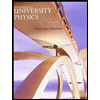 University Physics (14th Edition)PhysicsISBN:9780133969290Author:Hugh D. Young, Roger A. FreedmanPublisher:PEARSON
University Physics (14th Edition)PhysicsISBN:9780133969290Author:Hugh D. Young, Roger A. FreedmanPublisher:PEARSON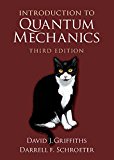 Introduction To Quantum MechanicsPhysicsISBN:9781107189638Author:Griffiths, David J., Schroeter, Darrell F.Publisher:Cambridge University Press
Introduction To Quantum MechanicsPhysicsISBN:9781107189638Author:Griffiths, David J., Schroeter, Darrell F.Publisher:Cambridge University Press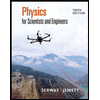 Physics for Scientists and EngineersPhysicsISBN:9781337553278Author:Raymond A. Serway, John W. JewettPublisher:Cengage Learning
Physics for Scientists and EngineersPhysicsISBN:9781337553278Author:Raymond A. Serway, John W. JewettPublisher:Cengage Learning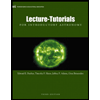 Lecture- Tutorials for Introductory AstronomyPhysicsISBN:9780321820464Author:Edward E. Prather, Tim P. Slater, Jeff P. Adams, Gina BrissendenPublisher:Addison-Wesley
Lecture- Tutorials for Introductory AstronomyPhysicsISBN:9780321820464Author:Edward E. Prather, Tim P. Slater, Jeff P. Adams, Gina BrissendenPublisher:Addison-Wesley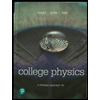 College Physics: A Strategic Approach (4th Editio...PhysicsISBN:9780134609034Author:Randall D. Knight (Professor Emeritus), Brian Jones, Stuart FieldPublisher:PEARSON
College Physics: A Strategic Approach (4th Editio...PhysicsISBN:9780134609034Author:Randall D. Knight (Professor Emeritus), Brian Jones, Stuart FieldPublisher:PEARSON

College Physics
Physics
ISBN:9781305952300
Author:Raymond A. Serway, Chris Vuille
Publisher:Cengage Learning

University Physics (14th Edition)
Physics
ISBN:9780133969290
Author:Hugh D. Young, Roger A. Freedman
Publisher:PEARSON

Introduction To Quantum Mechanics
Physics
ISBN:9781107189638
Author:Griffiths, David J., Schroeter, Darrell F.
Publisher:Cambridge University Press

Physics for Scientists and Engineers
Physics
ISBN:9781337553278
Author:Raymond A. Serway, John W. Jewett
Publisher:Cengage Learning

Lecture- Tutorials for Introductory Astronomy
Physics
ISBN:9780321820464
Author:Edward E. Prather, Tim P. Slater, Jeff P. Adams, Gina Brissenden
Publisher:Addison-Wesley

College Physics: A Strategic Approach (4th Editio...
Physics
ISBN:9780134609034
Author:Randall D. Knight (Professor Emeritus), Brian Jones, Stuart Field
Publisher:PEARSON
Newton's Second Law of Motion: F = ma; Author: Professor Dave explains;https://www.youtube.com/watch?v=xzA6IBWUEDE;License: Standard YouTube License, CC-BY